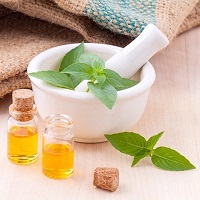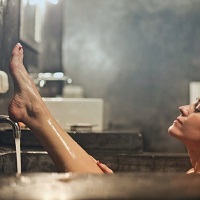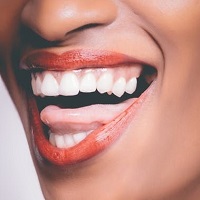
The benefits of aromatherapy are countless; there’s so much more to aromatherapy than meets the eye – or the nose! It isn’t just about things smelling nice. The science behind the subject is fascinating. Essential oils are extracted from different parts of different plants to form a concentrated liquid, capturing the “essence” of that plant. These oils may be applied in many different ways – some of which are detailed below – for cosmetic and therapeutic purposes; this is aromatherapy.
Aromatherapy is a fabulous way of utilising mother nature’s gifts for natural healing and as a preventive therapy, helping us to keep illness at bay and maintain good health. The structure and effect of oils differ greatly and where one oil has revitalising qualities, another may be used to aid relaxation. As well as the many physical benefits of aromatherapy, on a spiritual level it’s believed that there’s a relationship between our spirit and that of the plant – that we share the same life force and our very being is enhanced by the use of essential oils.
But these oils should be treated and used respectfully. There are a number of safety issues to be aware of e.g. whether to use neat, different options for dilution (i.e. carrier oils, emulsifiers, alcohol) and the importance of oil quality to name just three. These issues are covered in more detail in Safe Healing With Essential Oils. If you’re new to aromatherapy or trying an oil / application for the first time, please make sure you read the article and follow the links for further information.
Topical Absorption
This is where essential oils are applied to and absorbed by the skin. With topical absorption approximately 5-10% of the essential oil makes it through the skin cells to the tissues underneath and then into the blood stream. As a secondary benefit, when the following methods are used the vapours are also inhaled. Skin application has cosmetic and dermal healing uses as well as for pain relief.
Massage
Aromatherapy and massage together is an excellent combination. This can be whole body massage or focused on a particular area. One or more oils are mixed with a carrier oil and applied using the pressure and manipulation of massage. (A carrier oil is used to both dilute the essential oil, and to aid absorption through the skin.) For a true aromatherapy massage oil is always used, but for some treatments creams or lotions may be used instead.
Creams and lotions are not carriers but can be used to dilute essential oils and aid moisturisation. They are usually just rubbed into the face and / or body and may be applied at home or as a professional spa treatment to help heal scar tissue and to reduce the wrinkles. When combined with massage they have the added benefit of improving blood and lymph circulation and can ease muscular aches and pains as well as certain physical injuries.
Other benefits include easing stress and anxiety, and as a natural way to cure headaches.
Bathing

For a great way to combine absorption into the skin and inhalation, treat yourself to an aromatherapy bath for relaxation or as a vitality boost, depending on your choice of oil(s). Wait until the water has finished running before you add the oil to gain maximum benefit from the vapours. Get in and enjoy! This is one of the best stress relief techniques and a great way to deal with muscular aches and pains, to improve blood circulation and to support your natural body detox.
As you’re no doubt aware, oil and water do not mix, but you can combine essential oil with an emulsifier which will allow dispersion into the water. There are loads of emulsifiers out there which are suitable for different purposes. For a bath you can mix the oil with a little shower gel for example, and then add to the water.
Compress
The compress is another easy way to apply a D.I.Y. solution to ease a number of day to day issues. To prepare a compress, dilute your chosen oil with an emulsifier, add to a bowl of water, stir gently and then soak a cloth in the water until wet through. Remove the cloth and wring out any excess water. Apply to the affected area for 30 – 60 minutes.
For soothing muscular aches and pains or severe menstrual cramps use hot water. You can wrap the cloth in an insulating fabric such as wool to keep it hot for longer. To ease swelling or inflammation use cold water. A cold compress can be effective for insect bites, sprains and bruises. Place a bag of ice on top of the compress to keep it cold.
Conditions such as arthritis or migraine affect people differently. For some a hot compress will work better than a cold one or vice versa, so if you’re a sufferer you may need to experiment with both to decide which is best for you personally.
Direct Application
Essential oils can be applied to a specific area directly – as a natural acne treatment, to relieve insect bites, minor burns, cold sores, minor skin infections, headaches and more. As mentioned before, neat application of essential oils is a controversial subject so please see Safe Healing With Essential Oils. For the treatment of small areas some believe it’s OK to use undiluted oils, but it’s important to know more about the risks and possible outcomes before you decide if you’re in the neat camp or the diluted camp.
Inhalation
From inhalation methods, on average 50% of the essential oils reach the bloodstream – less from indirect inhalation (for example through an aromatherapy diffuser) and more via direct inhalation (e.g. steam inhalation.) Most of the oil vapours get into the bloodstream through the respiratory system, with the rest travelling through the nose for absorption by the brain via the olfactory nerve.
When the latter happens an emotional response is triggered and possibly a memory or personal association. (Have you ever caught an aroma for a split second and been instantly transported back to a memory many years ago? That’s due to this part of the brain.) The benefits of inhalation include to ease respiratory health issues and neurological disease as well as for mood enhancement.
Diffusers
Diffusers come in many shapes and sizes. Oil lamps and candle burners are classed as heat diffusers, and as the name infers they use heat to disperse the oils. This method of diffusion has its drawbacks – firstly, when essential oils are heated their composition can change considerably, thereby affecting their therapeutic benefits. Also, oils are highly flammable which poses an increased safety risk.
Other options include the ultrasonic diffuser. These use ultrasonic vibrations to agitate oil particles which are dispersed with the aid of water. As with heat, water can affect the therapeutic properties of the oils. Also, these types of diffuser generally need to be cleaned after every use to minimise bacterial and mineral build up. In addition, these models add an amount of moisture to the air which can be a drawback if you don’t want added humidity.
If you do opt for an ultrasonic diffuser, make sure you choose the right model as they can easily be confused with humidifiers, which are not designed with essential oil use in mind. There are cool mist and warm mist humidifiers which use water and water plus heat respectively, thereby diminishing the oil quality. They are also mainly made of plastic which will eventually become damaged following contact with the oils.
From my experience, the nebulizer is the number one option for diffusing essential oils. These types use pressurised air to disperse the molecules into the room – no heat, no water, just air. Undiluted oil can be used so the quality and benefits are not diminished. (Please note diffusing essential oils undiluted is different from applying neat oils to the skin. See Safe Healing With Essential Oils for further guidance.)
Another type is the evaporative diffuser. Electric versions have a fan which blows through a filter or pad with essential oil on it, dispersing the vapour into the air. Non electronic versions include the reed diffuser – with these, the oil seeps up through reeds which are placed in a small bottle or jar. Also, speciality jewellery is becoming very popular – for example bracelets that have a locket attached, holding a refillable aroma ball. You can enjoy the benefits of aromatherapy whilst making a fashion statement if that’s your thing!
These subtle application methods can be used for natural stress relief, to treat insomnia or as a home remedy for sinus infection.
(As with all diffuser types, follow safety guidelines and manufacturer’s instructions.)
Steam Inhalation
This can be easily done at home. Add your (diluted) oil mixture to a bowl of boiling water to produce steam. Then put your head over the bowl covered with a towel, eyes closed and breathe in for 5 to 10 minutes (or up to 20 minutes maximum.) Using your common sense, make sure your face isn’t so close to the water that it burns and stop if you feel uncomfortable at any point.
This method is one of the best-known home remedies for nasal congestion and other cold / flu symptoms.
Spritzers
Here’s another super easy D.I.Y. way to use essential oils. You can make a solution by mixing essential oil with an emulsifier and then adding to a spray bottle with distilled water. Shake to mix and that’s it…you’ve made your own spritzer that can be used as an air cleanser, a fabric freshener or on the body as a perfume or cooling mist. The benefits include mood enhancement, easing respiratory problems, as a good way to relieve stress naturally and a fresh smelling house, car or partner!
Direct Inhalation
The personal inhaler is a small, lipstick shaped / sized gadget that contains a small amount of oil(s) and can be inhaled close to the nostrils. Super handy and portable. Other ways of direct inhalation include sniffing (diluted) oils from cupped palms, from a cotton wool ball or on a flannel. Benefits of direct inhalation include easing nausea, hormonal imbalance, congestion, emotional distress and relaxation.
Internally
Ingestion
Due to the extremely high level of essential oil that makes it to the bloodstream and internal organs, this method of application should only be used under medical / practitioner guidance. Misuse could prove fatal so never attempt it as a D.I.Y. fix.
Suppositories / Pessaries
These are capsules or tablets that are inserted into the bottom or vagina – again under medical / practitioner guidance – where the contents gradually dissolve allowing the essential oil to be absorbed locally and then into the bloodstream.
Rectal application – uses include for lower bowel and rectal issues such as fissures and hemorrhoids. They are also used to aid lung infections, lyme disease and gastrointestinal infections.
Vaginal application – uses include menopausal dryness, for healing after surgery or childbirth, and vaginal and bladder infections.
Oral

Certain oils can be used to freshen breath and keep teeth clean. (Always check oils individually to ensure they are appropriate for specific uses.) To make a mouthwash, a small amount of oil can be mixed with purified or distilled water, baking soda and mineral drops. The solution is then gargled twice a day after brushing the teeth. Other preparations can be used to help fight gum disease and gingivitis, or to ease dental pain. Here the oils are mixed with a carrier and either rubbed directly onto the gums for a couple of minutes, or the mixture is used as a toothpaste.
Safety Advice
At this point allow me to iterate that this article is not an essential oils guide. I have not given details of what oils to use or dilutions because in order to safely practice the blending and application of oils there’s a whole load of safety information that you really should be aware of first. This cannot be condensed into a few paragraphs, but don’t let this put you off.

As with any form of complementary therapy, before starting any treatment, be aware of possible contraindications first and speak to your G.P. if you have any health issues. Likewise, seek precautionary advice from your doctor if you are an expectant mother, and also for the very young or elderly. Some oils may pose a health risk for animals. If you are planning on a professional treatment, make sure your aromatherapist has relevant experience and qualifications, and ideally belongs to an industry guild or association. (See the directory page.)
Conclusion
The purpose of this article was to give you an overview of some of the many methods of aromatherapy treatment out there. There are so many ways essential oils can be used to improve our health and wellbeing. As well as professional treatments, there are countless D.I.Y. options available which can be more affordable; they also give you the flexibility of when and where to apply if you have a busy schedule. Just be aware of safety guidelines and always use oils respectfully.
Finally, I hope you found this post useful. As always, if you have any questions or comments please leave them below. I would love to hear from you!




